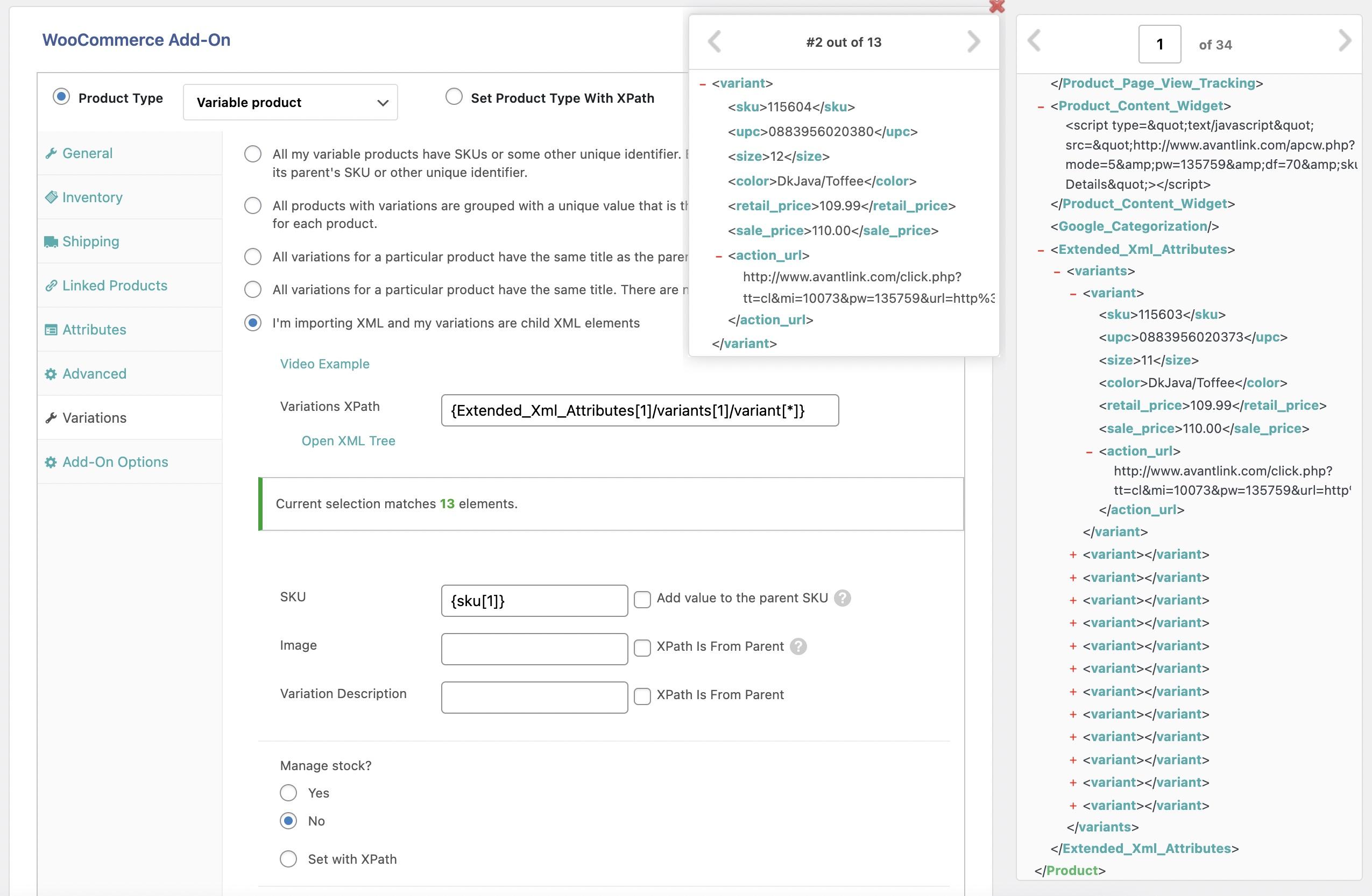Are you ready to take your WooCommerce store to the next level? if you’re selling products with variations—think clothing sizes, colors, or even digital downloads—then you know how crucial it is indeed to manage those options effectively. But let’s face it: importing product variations can feel like navigating a maze without a map. It’s a common challenge for many store owners, but fear not! In this guide, we’ll walk you through the ins adn outs of importing product variations in woocommerce, making the process as smooth as possible. Whether you’re a seasoned pro or just starting out, we’ll break it down step by step, so you can save time, reduce frustration, and focus on what really matters: growing your business.Ready to simplify your product management and enhance your customers’ shopping experience? Let’s dive in!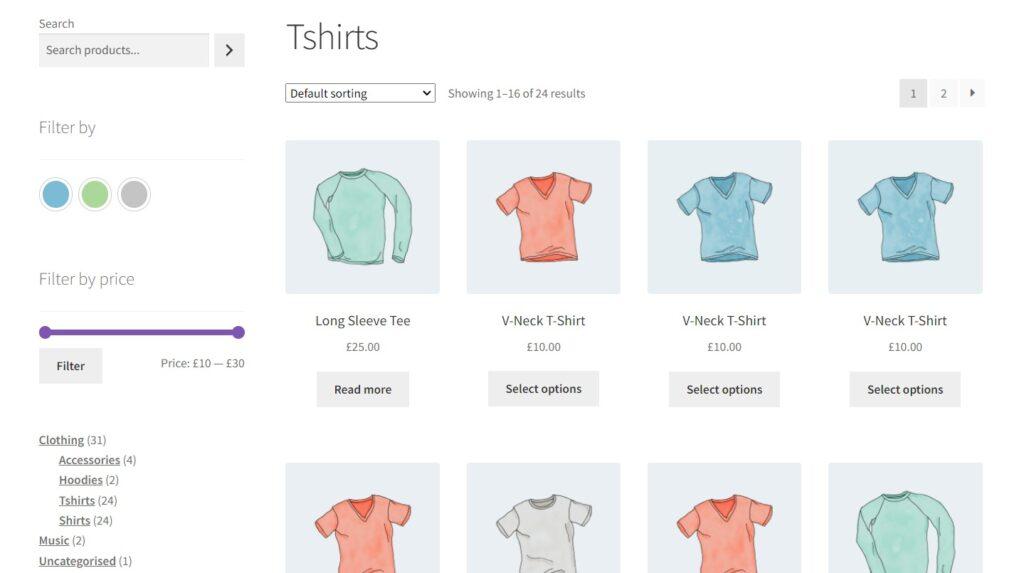
Understanding Product Variations in woocommerce
When managing an online store with WooCommerce, understanding how to effectively work with product variations is crucial for both enhancing customer experience and streamlining your inventory management. Product variations allow you to offer different options for the same product, such as size, colour, or material, all within a single product listing. This not only keeps your store organized but also helps customers easily find what they’re looking for without sifting through multiple pages.
Creating variations involves setting attributes and properties that define the differences between each version of a product. As a notable example, if you’re selling a t-shirt, you might have attributes such as Color and Size. These attributes can then be used to generate all possible combinations. Here’s a simple breakdown of how attributes and variations work:
- Attributes: These are the characteristics of the product, like color or size.
- Variations: These are the actual options available to customers, such as a red t-shirt in medium size or a blue t-shirt in large size.
- Prices: Each variation can have its own price, stock level, and SKU.
to assist you in visualizing product variations, consider the following example table that outlines attributes and their corresponding variations:
| Attribute | Variation | Price |
|---|---|---|
| color | Red | $19.99 |
| Color | Blue | $19.99 |
| Size | Medium | $19.99 |
| Size | Large | $21.99 |
Importing these variations can be simplified by utilizing CSV files. Make sure to structure your CSV correctly, indicating both the attributes and variations, so WooCommerce can understand how to parse through the data. By doing so, you can save time and reduce the chances of errors when adding multiple variations. Remember to double-check that the SKU (Stock Keeping Unit) is unique for each variation to avoid inventory discrepancies.
Ultimately, being learned about product variations not only enhances your store’s functionality but also leads to a better shopping experience for your customers. By offering clear, well-organized product options, you’ll increase customer satisfaction and drive sales in your WooCommerce store.
The Importance of Accurate Importing for your Store
When running an online store, precision is paramount.Accurate importing of product variations not only enhances your inventory management but also ensures that customers have a seamless shopping experience. Every detail—from color and size to material and price—plays a notable role in a customer’s decision-making process. If these details are incorrect, it can lead to frustration, returns, and a damaged reputation.
Consider the impact of incorrect data on your sales. Imagine a customer searching for a blue medium t-shirt, only to find a listing that displays the wrong color or size. This scenario can lead to lost sales and disappointed customers. by maintaining accuracy in your product variations, you build trust with your audience, making them more likely to return for future purchases.
moreover, well-structured data helps in optimizing your store for search engines. When each product variation is accurately detailed, it increases the chances of appearing in relevant search results, thus driving more traffic to your store. To achieve this, you should focus on:
- Clear Descriptions: Ensure each variation has a unique and comprehensive description.
- Consistent Pricing: All variations should have accurate and consistent pricing to avoid confusion.
- High-Quality Images: Each variant should have its own set of images to showcase the differences clearly.
Utilizing a streamlined importing process with the right tools can substantially reduce errors. Consider using plugins that facilitate bulk uploads with built-in validation checks. This way, you can catch potential errors before they go live. Here’s a quick comparison of some popular WooCommerce importing tools:
| Tool | Features | Price |
|---|---|---|
| WP All Import | Drag & drop interface, custom fields | $97/year |
| Product Importer | CSV support, bulk updates | Free |
| WooCommerce Product CSV Import Suite | Advanced mapping, scheduled imports | $49 |
Ultimately, investing time and resources into accurate importing will pay off in the long run. Not only will it streamline your operations, but it will also foster a positive shopping environment where customers feel confident in their purchases. Remember, happy customers lead to repeat business and strong word-of-mouth marketing, which are invaluable for any online store.
Preparing Your Data for a Smooth import Process
When it comes to importing product variations into WooCommerce,the key to success lies in the planning of your data. Whether you’re dealing with variations of size, color, or material, having a well-structured dataset can make all the difference.Here are some essential steps to ensure your import process goes off without a hitch:
- Organize Your Spreadsheet: Use a spreadsheet program like Excel or Google Sheets to create a clear layout of your products and their variations. Each variation should be represented in its own row, while shared attributes (like product names and prices) should be grouped together.
- Define Your Attributes: before importing, make sure to accurately define product attributes. For instance, if you sell shirts in different colors and sizes, create a separate column for each attribute. This clarity allows WooCommerce to recognize and categorize variations correctly.
- Use Consistent Naming Conventions: Stick to consistent naming conventions for attributes. For example, if you have a color attribute, use the same format (like “Red”, “Blue”, etc.) throughout your dataset. Inconsistencies can lead to errors during the import process.
Along with organizing your data,consider the following tips to enhance your import preparation:
- Check for Duplicates: Before importing,scan your dataset for duplicate entries. This can prevent issues like accidental overwriting of existing products and ensure that your inventory remains clean and well-managed.
- Utilize Proper File Formats: Save your spreadsheet in a supported format, such as CSV or XML, which WooCommerce can easily process. CSV is commonly used for its simplicity and widespread compatibility.
- Test Your Import: If you’re new to importing, consider performing a test run with a small subset of your data. This allows you to pinpoint any potential issues without affecting your entire inventory.
Lastly,remember to keep your data clean and free from unneeded whitespace or special characters,which can cause errors during the import. By focusing on these preparation steps, you can pave the way for a smooth and efficient importing experience.
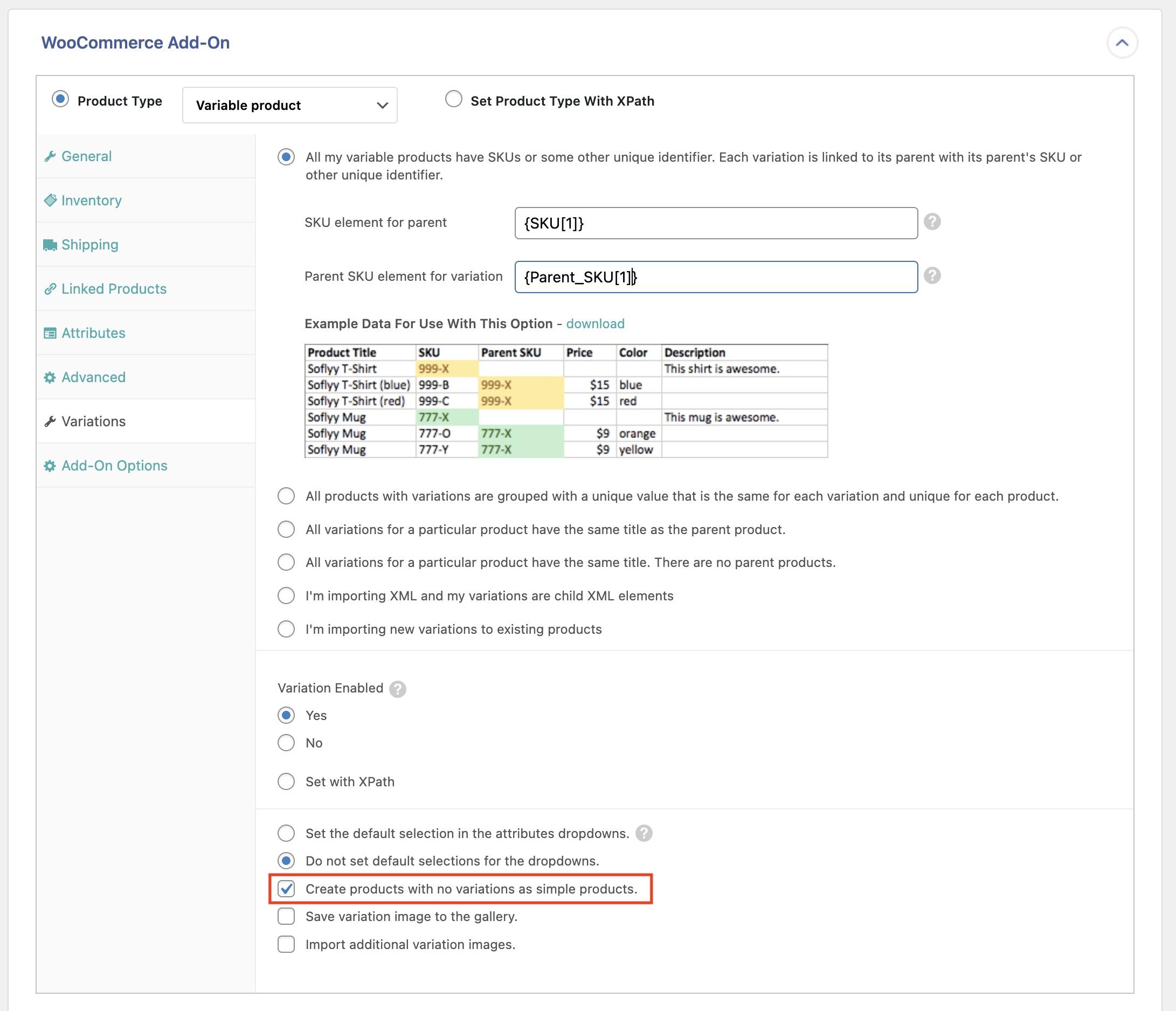
Choosing the Right Tools for Importing Variations
When it comes to importing product variations into WooCommerce, selecting the right tools can make all the difference in streamlining your workflow and ensuring accuracy. With so many options available, it’s essential to identify tools that not only fit your needs but also enhance your overall eCommerce experience.
One of the most popular choices is the WooCommerce Product CSV Import Suite. This plugin allows you to easily import and manage complex product variations using a CSV file. It supports various attributes and custom fields, making it a robust solution for those with extensive product catalogs.
Another noteworthy option is WP All Import, which is highly regarded for its adaptability and user-friendly interface. With its drag-and-drop functionality, you can map your CSV or XML data directly to woocommerce fields. Plus, it supports advanced features like scheduling imports and importing images, saving you time on repetitive tasks.
for those seeking a free choice, the WooCommerce built-in product importer offers basic functionality. While it may lack some advanced features of premium plugins, it’s a great starting point for small to medium-sized stores. Just keep in mind that you might be limited when it comes to handling large datasets or complex variations.
Lastly, consider the importance of compatibility with your theme and any other plugins you may be using. Before committing to a tool, check for user reviews and documentation to ensure it integrates smoothly with your existing setup. A good tool should not only save you time but also enhance your store’s performance and usability.
| Tool | Price | Key Features |
|---|---|---|
| woocommerce Product CSV Import Suite | $99/year | Complex variations, custom fields support |
| WP All Import | $99 (Pro version) | Drag-and-drop interface, image import |
| Built-in Importer | Free | Basic functionality, easy to use |
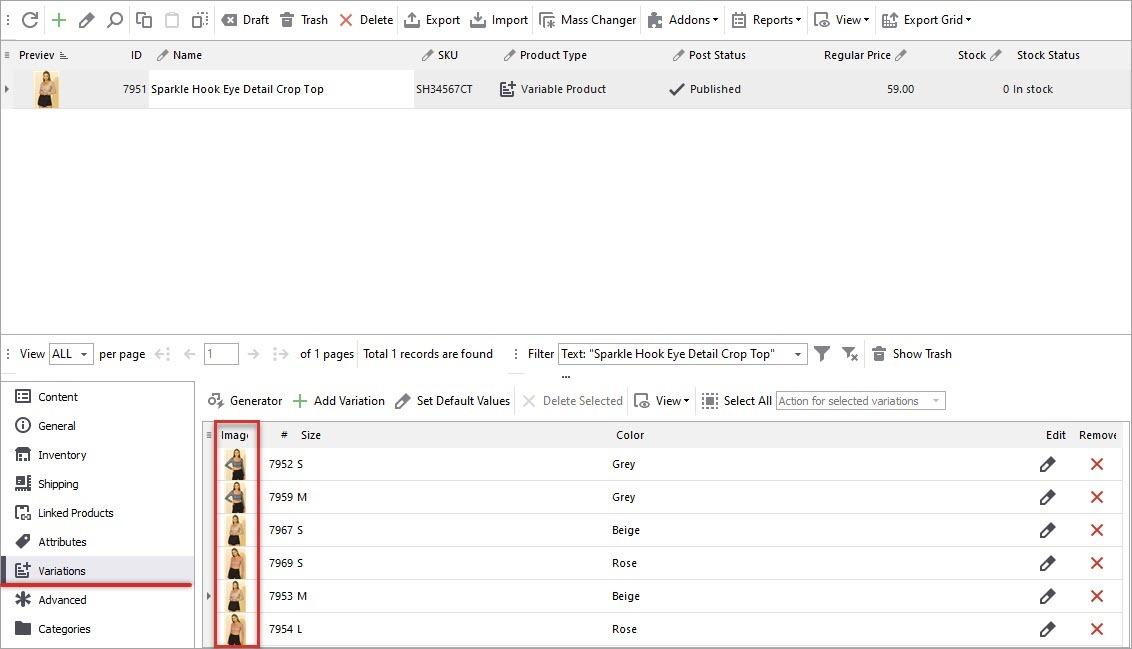
Step-by-Step Guide to Importing Variations
Importing product variations into WooCommerce can elevate your online store’s functionality and improve customer experience. By following these straightforward steps, you can ensure that your variations are set up correctly and efficiently.
Prepare Your CSV File:
- Start with a clean CSV file. Make sure each variation is listed in separate rows.
- Include essential columns such as SKU, Attribute Name, and Attribute Value.
- Ensure to have a parent product row that consolidates all variations.
Map Your Columns:
When you upload your CSV file in WooCommerce, you’ll need to map the columns correctly. This step is crucial for the variations to be recognized properly.
- Go to Products > All Products and click on the Import button.
- Choose your CSV file and proceed to the mapping screen.
- Make sure that each column in your CSV is correctly matched to WooCommerce’s default fields.
Use Product Attributes:
To import variations effectively, use WooCommerce’s built-in attribute features:
- Define your attributes in Products > Attributes before the import.
- Use the same attribute names in your CSV to ensure a seamless integration.
| Attribute Name | Example Values |
|---|---|
| Color | Red, Blue, Green |
| Size | Small, Medium, Large |
Final Steps:
- After you’ve finished mapping your attributes, click on Run the Importer.
- Once the import is complete, check your products to ensure all variations have been imported correctly.
- Don’t forget to review and update any additional settings like pricing or stock status for each variation.

Common Pitfalls to avoid When Importing
When importing product variations into WooCommerce, it’s easy to overlook certain details that can lead to complications down the line. One common pitfall is failing to properly format your CSV file. Make sure to adhere to the specific structure required by WooCommerce,as even minor deviations can result in errors. A well-structured file not only saves you time but also reduces the chances of data loss.
Another frequent mistake is neglecting to set clear attributes for your variations. Each product variation should have distinct attributes that differentiate them from one another. Without these, your variations may not show up correctly in the store. Always remember to double-check that attributes like size, color, and material are properly defined and consistent across your variations.
Additionally,don’t underestimate the importance of stock management. If you fail to specify stock levels for each variation, you risk overselling or running into stock issues. Always set the inventory status for each variation and ensure that your stock quantities are accurate. This not only enhances customer satisfaction but also streamlines your order fulfillment process.
Ignoring the need for proper product images can also lead to missed opportunities. Each variation can have its own image,which helps customers make informed buying decisions. Make sure to upload high-quality images that accurately represent each variation.It enhances the overall shopping experience and can significantly increase conversion rates.
always test your imports on a small scale before executing a full-scale import. This practice allows you to catch errors and make necessary adjustments without risking your entire product catalog. Consider creating a test environment in your WooCommerce setup to trial your imports. It’s a small step that can save you a lot of headaches later on.
Tips for managing and Updating Imported Variations
Managing and updating imported product variations in WooCommerce can seem daunting, but with the right approach, it becomes a seamless task.Start by ensuring that your imported data is clean and organized.This means checking for duplicate entries, ensuring consistency in naming conventions, and verifying that all required fields are filled out correctly. A well-structured CSV file can save you a lot of headaches during the import process.
Once your variations are imported, regular updates are essential to keep your product listings relevant and engaging. Here are some tips for effective management:
- Utilize bulk edit Features: WooCommerce has built-in bulk editing tools that allow you to make changes to multiple products at once. Use this feature to change prices,stock levels,or attributes across several variations simultaneously.
- Monitor Inventory Levels: Keep an eye on your stock levels for each variation. Setting up low stock notifications can definitely help you stay proactive about restocking popular items.
- Optimize SEO: Ensure that each variation has unique SEO metadata. This can definitely help improve your search engine rankings and enhance visibility to potential buyers.
Additionally, consider establishing a regular schedule for reviewing your product variations. This could include checking customer feedback, analyzing sales data, and refreshing product descriptions. A well-maintained product catalog helps instill consumer confidence and can lead to increased sales.
When updating variations, it may be helpful to create a table to track changes. Below is a sample format you can follow:
| Variation Name | Price | Stock Status | Last Updated |
|---|---|---|---|
| Red T-Shirt – small | $19.99 | In stock | 2023-10-01 |
| Red T-shirt – medium | $19.99 | Out of Stock | 2023-09-28 |
| Red T-Shirt – Large | $19.99 | In Stock | 2023-10-01 |
By implementing these strategies, you’ll be better equipped to manage your imported variations effectively, ensuring that your woocommerce store remains current and competitive in today’s fast-paced market.

Optimizing Your Product Listings for Better Sales
To truly stand out in the crowded marketplace of WooCommerce, it’s essential to refine your product listings. Effective optimization can turn casual browsers into dedicated buyers. Here are some key strategies to enhance your listings:
- High-Quality Images: Use clear, high-resolution images that showcase your product from multiple angles. Include zoom functionality to allow customers to inspect details.
- Compelling Product Descriptions: Write engaging,informative descriptions that highlight the benefits and features of your product. Avoid jargon and aim for a conversational tone that resonates with your audience.
- SEO Optimization: integrate relevant keywords naturally throughout the title, description, and tags. This will improve your product’s visibility in search results.
Another element to consider is the use of product variations. When importing product variations, be sure to:
- Organize Attributes: Clearly define attributes such as size, color, and material.This helps customers easily find what they are looking for.
- Handle Stock Levels: Maintain accurate stock levels for each variation. This not only prevents overselling but also builds customer trust.
- Set Pricing Strategically: Consider how different variations might have different price points or discounts. Highlight any sales or offers prominently.
To visualize the importance of clear listings,consider this table comparing optimized and unoptimized listings:
| Aspect | Optimized Listing | Unoptimized Listing |
|---|---|---|
| Images | Multiple high-resolution images | One low-quality image |
| Description | Engaging and detailed | Generic and vague |
| SEO | Keyword-rich and strategic | No optimization |
By implementing these strategies,you not only enhance the user experience but also significantly increase your chances of converting visitors into satisfied customers. Remember, the goal is not just to sell a product, but to create a delightful shopping experience that encourages repeat business.
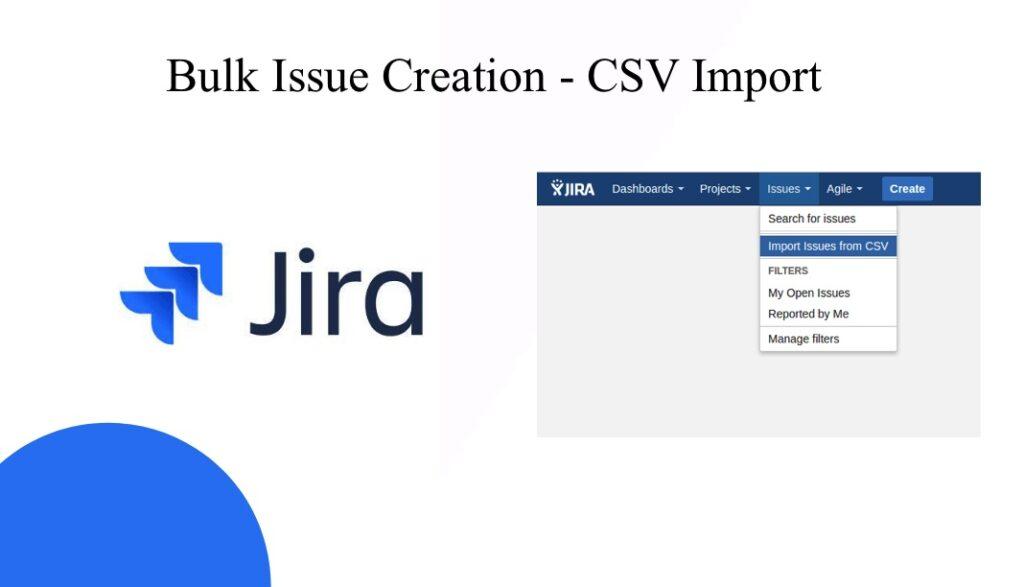
Troubleshooting Import Issues: Solutions and Tips
Importing product variations in WooCommerce can sometimes feel like navigating a maze, especially when things don’t go as planned. If you encounter issues during the import process,fear not! Here are some effective solutions and tips to help you troubleshoot common import problems.
First things first,ensure your CSV file is correctly formatted. A well-structured file is crucial for a successful import. Here are a few key points to check:
- Correct Headers: make sure your CSV headers match WooCommerce’s required fields, such as SKU, Name, Price, and Variations.
- Consistent Data: Variations need to have the same attributes listed consistently across different rows.
- No Empty Rows: Eliminate any blank rows or columns that could disrupt the import process.
If your import fails, check for error messages that WooCommerce provides. These can offer valuable insights into what went wrong. As an example, if you see an error related to missing attributes, verify that all variations include the required details. A common mistake is neglecting to define attributes for parent products, which can lead to import failures.
In cases where the import still doesn’t work, consider using a plugin designed for handling complex imports. plugins like WP All Import or Product CSV Import Suite can simplify the process and offer additional flexibility. They often come with built-in error handling and detailed logs, making it easier to identify and rectify issues.
if you’re still facing hurdles, reach out to the community! Forums and support groups can be a treasure trove of information.Don’t hesitate to ask for help; chances are someone else has faced the same issue and can offer guidance.

Enhancing Customer Experience with Well-Organized Variations
When it comes to online shopping, the customer experience can make or break a sale. One of the most significant ways to enhance this experience is by presenting product variations in a well-organized manner. By offering clear options for sizes, colors, or styles, you not only streamline the purchasing process but also empower customers to make informed choices. Here’s how you can elevate your product listings.
To start, ensure that each product variation is clearly defined. This means using specific attributes that resonate with your audience.Consider the following elements:
- Attributes: Define what makes each variation unique,such as materials,sizes,or colors.
- Images: Use high-quality images that display each variation so customers can see exactly what they are choosing.
- Pricing: Make sure prices are clearly marked for each variation, as different options may come with different costs.
Additionally, consider using a comparison table for complex products with multiple variations. This can definitely help customers quickly evaluate their options side by side:
| Variation | Size | Color | Price |
|---|---|---|---|
| T-Shirt | S, M, L, XL | Red, Blue, Green | $19.99 |
| Hoodie | S, M, L, XL | Black, Gray | $39.99 |
Moreover, utilizing the built-in features of WooCommerce can help facilitate a smoother shopping journey. Consider enabling the following settings:
- Dropdown Menus: These allow customers to select their variations effortlessly.
- Swatches: Color swatches can show variations without cluttering the page with images.
- Stock Management: ensure that you keep track of inventory for each variation to prevent overselling.
don’t underestimate the power of customer feedback on product variations. Encourage buyers to leave reviews related to specific variations, which can definitely help future customers make better decisions. This not only builds trust but also fosters community engagement within your store. by prioritizing an organized approach to variations, you create a shopping experience that is not only enjoyable but also highly efficient.
Frequently Asked Questions (FAQ)
Q&A: how to Import Product Variations in WooCommerce: A Guide
Q: why should I consider importing product variations into my WooCommerce store?
A: Great question! Importing product variations can save you a ton of time. Rather of entering each variation manually, which can be tedious, importing them in bulk allows you to streamline the process.Plus, it ensures consistency in your product data, minimizing errors and enhancing the overall shopping experience for your customers.
Q: what types of product variations can I import?
A: You can import all sorts of variations, including size, color, style, and more! WooCommerce allows you to create variable products with multiple attributes, so you can cater to various customer preferences. This flexibility can significantly boost your sales by offering more options to your customers.
Q: Do I need any special tools or plugins to import product variations?
A: While WooCommerce has some built-in functionality for importing products, using a dedicated plugin like “Product CSV Import Suite” or “WP All Import” can make the process smoother and more efficient. These tools often come with user-friendly interfaces and advanced features that can handle complex variations effortlessly.
Q: Can I use CSV files to import variations?
A: Absolutely! CSV files are one of the most common methods for importing product variations. You can create a CSV file with all your product data, including variations, and then upload it directly to your WooCommerce store. Make sure to follow the correct format, and you’ll be good to go!
Q: What if I encounter errors during the import process?
A: Don’t worry; it happens! Common errors often include incorrect formatting or missing required fields. Check your CSV file for any discrepancies and refer to woocommerce’s documentation for troubleshooting tips. Many plugins also have built-in validation checks that can definitely help catch issues before the import.
Q: How do I ensure that my customers can easily navigate through the product variations?
A: To enhance customer experience, make sure to use clear and descriptive attribute names. Use swatches for colors and sizes where applicable, and consider adding images for each variation. This way, customers can easily visualize their choices, which can lead to higher conversion rates.
Q: Is there anything else I should keep in mind when importing variations?
A: Definitely! Always back up your site before importing any data. This way, if anything goes wrong, you can easily restore it. Also, consider running a test import with a few products first to ensure everything works as expected before doing a bulk import.It’s all about being prepared!
Q: How can I learn more about the nuances of importing product variations?
A: You’re already on the right track by reading this guide! But you can also check out WooCommerce’s official documentation, online forums, and tutorials. Engaging with the WooCommerce community can provide valuable insights and tips from fellow store owners.Plus, don’t hesitate to experiment and find what works best for your store!
Q: Ready to get started?
A: Absolutely! With the tips and insights from this guide, you’re well-equipped to import product variations into your WooCommerce store efficiently. Get your products set up, and watch your sales soar as customers enjoy a seamless shopping experience!
The Conclusion
And there you have it! importing product variations into woocommerce may seem daunting at first, but with the right steps, it can transform your online store into a seamless shopping experience for your customers. By mastering this process, you’re not just saving time; you’re enhancing your product offerings and making it easier for shoppers to find exactly what they want.
Remember, every product variation you add helps cater to the diverse needs of your customers, whether it’s different sizes, colors, or styles. Plus, a well-organized inventory boosts your credibility and encourages more sales. So why not take the plunge?
If you haven’t started yet, now is the perfect time to dive in and experiment with these tips. Don’t hesitate to reach out for help or share your experiences with fellow store owners. the WooCommerce community is vast and supportive!
Happy importing, and here’s to creating an exceptional shopping experience that keeps your customers coming back for more!

